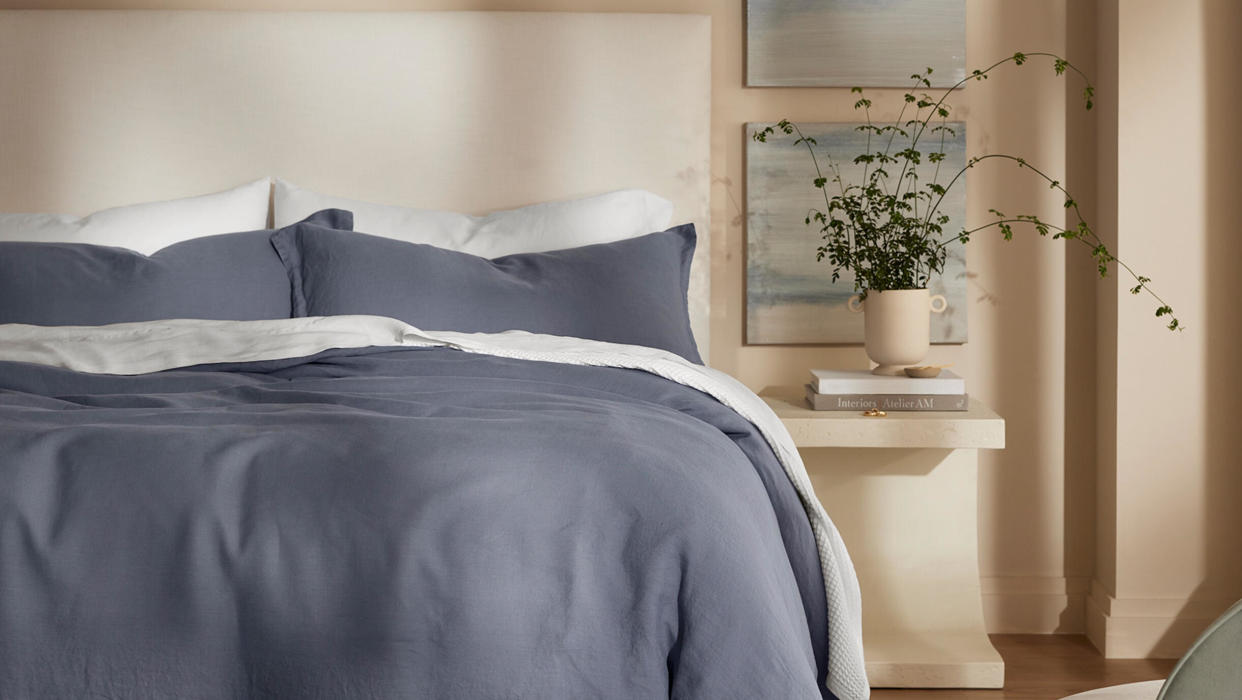Want to know where your bedding comes from? Now you can track it

Sustainability | May 9, 2024
By Laura Fenton
When Missy and Scott Tannen started direct-to-consumer organic bedding brand Boll & Branch in 2014, they spent nearly two years educating themselves about the textile industry and finding partners that could deliver the organic raw materials and fair-trade labor they desired for their products. This was during a time when there was a lot of media coverage of both child labor being used in cotton production and mislabeling of lesser cottons as “pure Egyptian cotton.” With this in the back of their minds, the Tannens didn’t want to just know that their product was organic and ethically made—they wanted to be able to prove it, if needed.
“We didn’t want to run through one of these one-way doors and suddenly end up with a product that isn’t what we say it is,” says Scott Tannen. “It was really important for us to make sure that we had full traceability and documentation on every single product we made. Between GOTS [Global Organic Textile Standard], Fair Trade and some of the other third-party certifications, we’ve been holding this documentation on everything from the start.”
Ten years later, an employee suggested that they make that traceability visible to the customer. So Boll & Branch developed a consumer-facing traceability tool they call Origin Track, which debuted this week and allows customers to follow the full journey of the brand’s bedding and textiles.
Since its launch, Boll & Branch has marked every single product it produced with its lot number—a feature that powers Origin Track today. After entering the lot number, a customer can view information about where the product’s cotton was farmed, dyed, and woven, cut and sewn. For example, a particular pair of the company’s signature hemmed sheets was made from cotton that was grown and ginned in Odisha, India, before making its way south to a dyeing facility in the state of Tamil Nadu, after which the sheets were ultimately woven in the city of Madurai. At each of these stages, Boll & Branch offers details about the facilities: The dyeing operation, for example, is family-owned and employs 6,000 people, the majority of whom are women.
Tannen says Boll & Branch chose to build the tool because they believe it may help move the needle toward change in their industry. He believes that when customers can see not just where the product came from but precisely how it was sourced and why, they will think more deeply about their purchases. “The educated customer can ask questions of all the different companies that they buy from, not just in our category, but everyone,” he says. “The industry talks about transparency and sustainability, but I think traceability is the element that really takes those higher-order ideas and drives them home.”
Another motivation was to tell the human stories behind the products. “At the end of the day, it’s women and men just like us in different parts of the world who are making all the products we use. I think that the better we can draw that connection for the consumer, the better we can make them value these choices,” says Tannen. In telling the stories of the craftspeople and farmers behind their products, he hopes to humanize the products his company sells—and make customers feel more passionate about buying them.
Tannen also believes that Boll & Branch’s transparency will distinguish the brand from its competitors. “These kinds of stories are ultimately what sets a brand apart,” he says. “They are much more compelling than the brand that’s still just waving a 40 percent off flag for a Memorial Day sale—that feels a little bit like a dinosaur to a young consumer.” But Tannen isn’t treating transparency like a trade secret. “In any category, even if you’re a competitor, I’d be thrilled to help,” he says. “This should be open source. This isn’t proprietary. We just happen to be the only ones doing it.”
Skeptics might say that consumers don’t really care about traceability, but a week after launching the tool, Tannen says that thousands of customers have looked up their products on Origin Track. (Boll & Branch sent out an announcement email to its entire customer mailing list.) “We can see what they’re searching,” he says. “We’ve got people who bought sheets four or five years ago who are flipping over their labels and learning the story. I think that’s really compelling.”
____________
Laura Fenton is a writer with a special interest in the intersection between homes and sustainability, and is the author of the Living Small newsletter and two interior design books, The Little Book of Living Small and The Bunk Bed Book. She has written about home and design for nearly 20 years, and her work has appeared in many outlets, including Better Homes & Gardens, House Beautiful, Real Simple, and The Washington Post, as well as online publications and regional design magazines.
Want to stay informed? Sign up for our newsletter, which recaps the week’s stories, and get in-depth industry news and analysis each quarter by subscribing to our print magazine. Join BOH Insider for discounts, workshops and access to special events such as the Future of Home conference.

